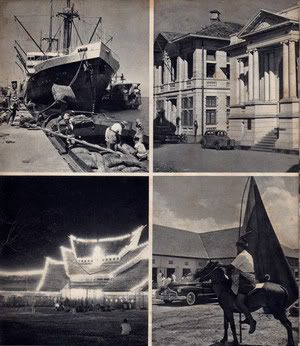From: Photography Field Guide: Landscapes and Ultimate Photography Field Guide: Landscapes
By:Robert Caputo
August 2007
Keep these tips from photographer Robert Caputo in mind as you're taking landscape photos.
 Take time to explore. Part of the joy of landscape photography is being out in nature. Wander around and get a sense of the place. It will take time and patience to discover the best way to show what makes it unique.
Take time to explore. Part of the joy of landscape photography is being out in nature. Wander around and get a sense of the place. It will take time and patience to discover the best way to show what makes it unique.
Photograph by William Albert Allard
- Visualize your photograph. Create the image in your mind the way a painter would create it on a canvas. Then think about the time, light, and composition that will translate what you see in your mind into a photograph.
- Get out before sunrise and stay out after sunset—the times when the light is best. Use the harsher light of midday to scout.
- It's much more fruitful to spend time on one or two locations than to race around. A great shot of one place beats several mediocre ones of many. Such an approach allows you to be creative. Once you have recorded the image you were thinking about, try something different. Climb a tree, wade out to the middle of a stream, use a flower or other object in the foreground, try another lens or a slow shutter speed. Play with the subject and your gear. Have fun. You may be surprised at the results, and you will often capture something more than what postcards show—something original and quite personal.
- Be careful in the placement of foreground elements. You don't want them to detract from what your photograph is really about.
- Framing can be very helpful when you cannot get close to your subject. It can give you an interesting way to deal with empty space in the foreground or in the sky.
- Since we usually look for details, it can be harder to see blocks of color or shape. Squint a bit: Details will blur and you will see things as masses.
- Buy a small liquid level and attach it to your tripod head.
- Lens flare can be a problem with wide lenses. Use your hand or a piece of cardboard to screen the lens from the sun—but keep the screen out of the frame.
- If you are staying in one place for several days, check out the long-range weather forecast and plan your shoots around the weather that is best for specific subjects.
- If you are with friends, don't be shy about using them in images to get a sense of scale. But remember that the photos are of the place, not the people.
- To learn how light direction affects the look and feel of images, photograph a tree lit from the front, the side, and the back.
- Gaffer's tape is an essential photographic accessory. Among its innumerable uses: taping reflectors and flashes in place, labeling film type on the back of cameras, and sealing camera cases.
- If you want circular star trails, point the camera at the North Star.
- When making long exposures, use a remote release to avoid camera movement. If you don't have a remote release, use the camera's self-timer. And be mindful of any breeze that might be moving your subject.
- Avoid getting your equipment wet. If you are shooting near a fall that is sending up a lot of spray, cover your camera with a plastic bag as you would to protect it from rain. If it or a lens gets wet, wipe the item immediately and put in the sun to dry.
- Never be content with what you see in the viewfinder the first time you raise it to your eye. Move around, lie down, find a different angle.
 Take time to explore. Part of the joy of landscape photography is being out in nature. Wander around and get a sense of the place. It will take time and patience to discover the best way to show what makes it unique.
Take time to explore. Part of the joy of landscape photography is being out in nature. Wander around and get a sense of the place. It will take time and patience to discover the best way to show what makes it unique.






